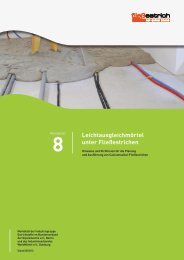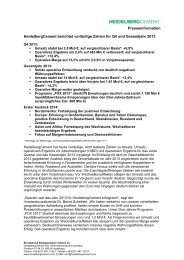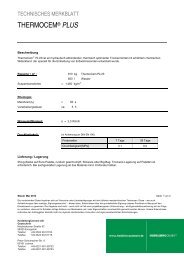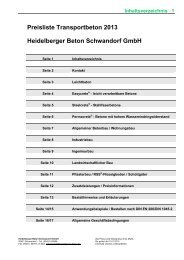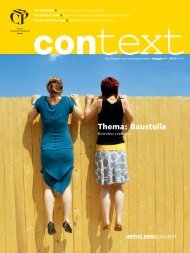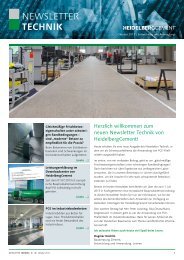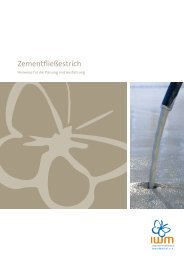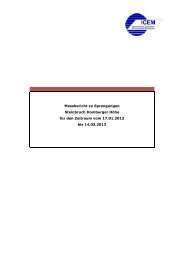TPCC Annual Report 2008.indd - HeidelbergCement
TPCC Annual Report 2008.indd - HeidelbergCement
TPCC Annual Report 2008.indd - HeidelbergCement
You also want an ePaper? Increase the reach of your titles
YUMPU automatically turns print PDFs into web optimized ePapers that Google loves.
Tanzania Portland Cement Company Ltd, <strong>Annual</strong> <strong>Report</strong> 2008<br />
Interest bearing loans and borrowings<br />
All loans and borrowings are initially recognised at the fair value of the consideration received less directly attributable<br />
transaction costs.<br />
After initial recognition, interest-bearing loans and borrowings are subsequently measured at amortised cost using the<br />
effective interest method. Gains and losses are recognised in profit or loss when the liabilities are derecognised as well<br />
as through the amortisation process.<br />
Borrowing costs<br />
Borrowing costs directly attributable to the acquisition, construction or production of an asset that necessarily takes a<br />
substantial period of time to get ready for its intended use or sale are capitalised as part of the cost of the respective as-<br />
sets. All other borrowing costs are expensed in the period they occur. Borrowing costs consist of interest and other costs<br />
that an entity incurs in connection with the borrowing of funds.<br />
Intangible assets<br />
Intangible assets acquired are measured on initial recognition at cost. Following initial recognition, intangible assets are<br />
carried at cost less any accumulated amortisation and any accumulated impairment losses. Internally generated intangi-<br />
ble assets are not capitalised and expenditure is charged against profits in the year in which the expenditure is incurred.<br />
The useful lives of intangible assets are assessed to be finite. Intangible assets with finite lives are amortised over the<br />
useful economic life and assessed for impairment whenever there is an indication that the intangible asset may be im-<br />
paired. The annual rate of amortisation which has been consistently applied is 14% – 50%.<br />
The amortisation period and the amortisation method for an intangible asset are reviewed at least at each financial year-<br />
end. Changes in the expected useful life or the expected pattern of consumption of future economic benefits embodied<br />
in the asset is accounted for by changing the amortisation period or method, as appropriate, and treated as changes in<br />
accounting estimates. The amortisation expense on intangible assets is recognised in the income statement. Gains or<br />
losses arising from derecognition of an intangible asset are measured as the difference between the net disposal pro-<br />
ceeds and the carrying amount of the asset and are recognised in profit or loss when the asset is derecognised.<br />
Impairment of non-financial assets<br />
The Company assesses at each reporting date whether there is an indication that an asset may be impaired. If any such<br />
indication exists, or when annual impairment testing for an asset is required, the Company makes an estimate of the<br />
asset’s recoverable amount. An asset’s recoverable amount is the higher of an asset’s or cash generating unit’s fair value<br />
less costs to sell and its value in use and is determined for an individual asset, unless the asset does not generate cash<br />
inflows that are largely independent of those from other assets or groups of assets. Where the carrying amount of an<br />
asset exceeds its recoverable amount, the asset is considered impaired and is written down to its recoverable amount.<br />
In assessing value in use, the estimated future cash flows are discounted to their present value using a pre-tax discount<br />
rate that reflects current market assessments of the time value of money and the risks specific to the asset. Impairment<br />
losses of continuing operations are recognised in the income statement in those expense categories consistent with the<br />
function of the impaired asset.<br />
An assessment is made at each reporting date as to whether there is any indication that previously recognised impair-<br />
ment losses may no longer exist or may have decreased. If such indication exists, the recoverable amount is estimated. A<br />
previously recognised impairment loss is reversed only if there has been a change in the estimates used to determine the<br />
36





